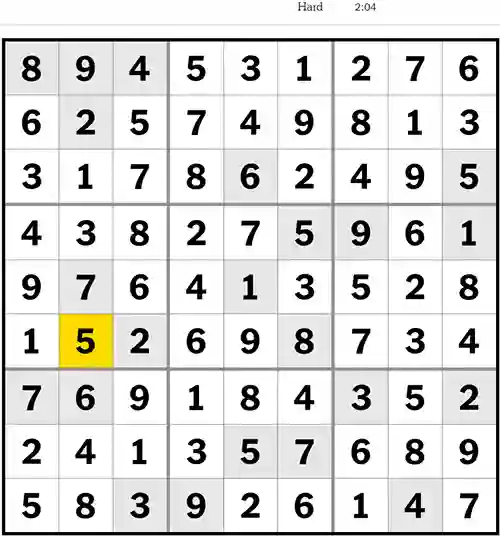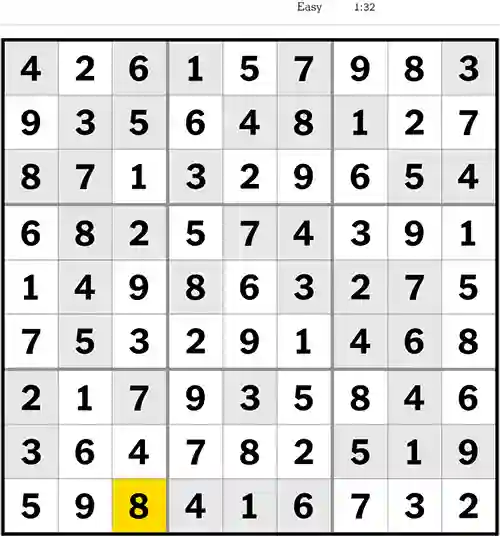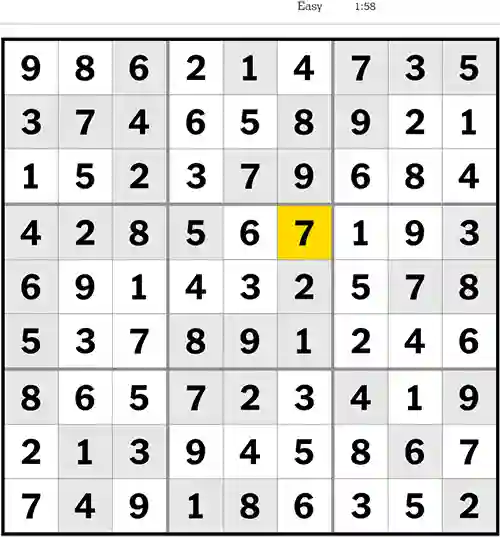Sudoku has become one of the most popular puzzle games in the world, and the New York Times is a prime source for some of the most challenging puzzles like NYT Letter Boxed. Whether you’re a beginner or a seasoned veteran, the New York Times Sudoku puzzles can be a great way to exercise your brain and improve your problem-solving skills.
In this article, we’ll provide tips and strategies and answers for solving hard and medium-level New York Times Sudoku puzzles.
The New York Times offers a daily Sudoku puzzle in their print edition and on their website. The puzzles are available in varying levels of difficulty, from easy to hard, and are a great way to challenge your problem-solving skills and improve your mental agility.
NYT Sudoku Daily Rewards
The New York Times Sudoku puzzles do not offer any tangible rewards for solving them. However, solving Sudoku puzzles can be a rewarding experience in itself.
Many people find that completing a Sudoku puzzle provides a sense of accomplishment and satisfaction, especially when they are able to solve a puzzle that is more difficult than they are used to. Sudoku puzzles can also be a fun way to pass the time and provide a mental break from other activities.
How to Play NYT Sudoku Game?
- Visit the nytimes.com Sudoku NYT Game Section or click on the Play now button.
- Fill the grid using your keyboard so that the digits 1 to 9 appear in every row, column, and 3×3 box without repeating.
- When a number appears nine times on the grid, it will light up. This can be turned off in Settings.
- Enter figures that you are confident about using Normal Mode. Use Candidate Mode to add or delete several square possibilities.
- You can also use your mouse to switch between candidates, and pressing Space will switch between Fill and Candidate Mode.
- The Hint button will highlight the next empty or erroneous logical square to solve.
- It will mark that square as wrong if it is.
- Every day, three Sudokus with NY TIMES Sudoku Easy, NYTIMES Sudoku Medium, and NYT Sudoku hard difficulty levels are released.
NYT Sudoku Answers Today
Today – 11th April 2023 Answers



11th April 2023 Answers
HARD

Medium

Easy

Additionally, for some people, solving Sudoku puzzles can help improve their memory, concentration, and cognitive skills. So while there may not be any physical rewards for completing a New York Times Sudoku puzzle, the mental benefits of solving puzzles can be rewarding in their own right.
The Basics of NYT Sudoku
Before we dive into solving the puzzles, let’s quickly review the basics of Sudoku. The goal is to fill in a 9×9 grid with the numbers 1 through 9, so that each row, column, and 3×3 box contains each number exactly once. Some squares within the grid will already have numbers in them, and your job is to fill in the empty squares with the correct numbers.
Tips for Solving Medium-Level NYT Sudoku Puzzles
Medium-level puzzles can be a great way to build your confidence and skill in Sudoku puzzles. Here are some tips for solving medium-level New York Times Sudoku puzzles:
- Start with the easy squares: Begin by filling in squares that only have one possible number. Then, look for rows, columns, or sub-squares that only have a few missing numbers and try to figure out which number goes in each square.
- Look for patterns: As you fill in more squares, look for patterns and possibilities. Use logical deduction to eliminate possible numbers from squares, and figure out which numbers must go in certain squares based on the numbers already filled in.
- Use pencil marks: Make light marks in the squares that show possible numbers that could fit. This technique can help you keep track of possibilities and eliminate potential numbers as you fill in other squares.
Tips for Solving Hard-Level NYT Sudoku Puzzles
Hard-level puzzles can be incredibly challenging, but also extremely satisfying to solve. Here are some tips for solving hard-level New York Times Sudoku puzzles:
- Be patient: Solving hard-level Sudoku puzzles takes time, so be patient and take breaks as needed. Don’t try to solve the puzzle all at once, but rather focus on small sections at a time.
- Look for hidden patterns: Hard-level puzzles often require a more advanced level of pattern recognition. Look for hidden patterns that may not be immediately obvious, such as diagonals or an unbroken chain of numbers.
- Practice, practice, practice: The more you practice, the better you’ll get at solving hard-level Sudoku puzzles. Don’t be discouraged if it takes multiple attempts to solve a puzzle, as each attempt can help you learn new techniques and approaches.
Conclusion
Whether you’re a casual Sudoku player or a serious puzzle enthusiast, the New York Times Sudoku puzzles can provide hours of challenging and satisfying entertainment. By following these tips and strategies, you can improve your problem-solving skills and become a master at solving hard and medium-level New York Times Sudoku puzzles. So grab a pencil, get started, and enjoy the mental workout that Sudoku puzzles can provide!


